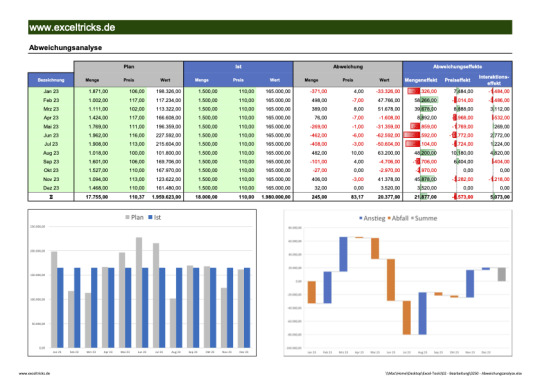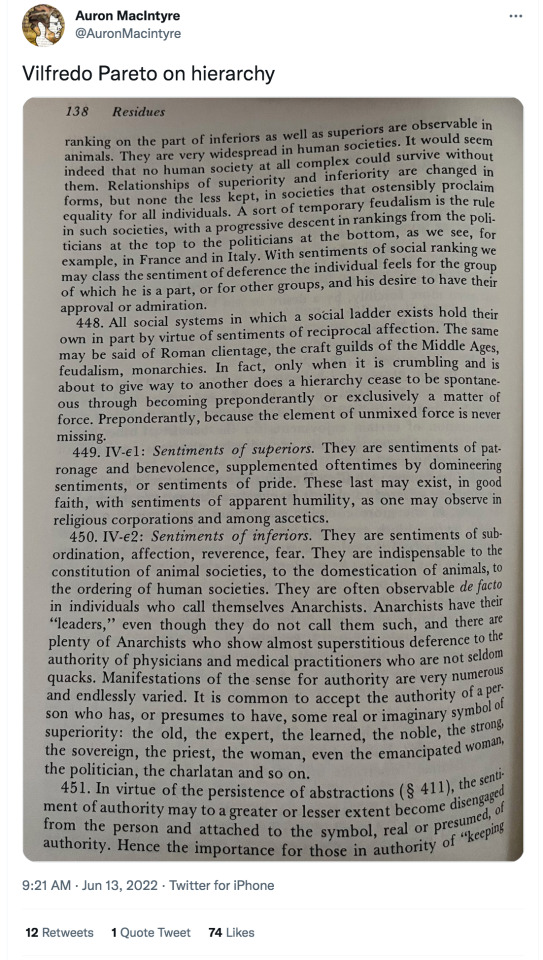#vilfredo
Text














you know..nocturnes are just really fun to play with shapewise. even the ones that aren't full body there's still so much you can do with their faces!
(though omg i need to make new drawings for Wick and Antikyra..literally the first two nocs in my lair, they deserve new art! Lessie too but I think i want to regene her fgsfd)
#fr nocturne#nocturne#my art#uva-ursi#belisa#lessie#pfefferminze#antikyra#douglas#mega#royi#vilfredo#wick#sonata#sweetheart#avril#freyisbreen#im never quite sure what my actual favorite breed to draw is but..nocturnes seem to be a solid contender
72 notes
·
View notes
Text
Mit dieser Excel-Vorlage können Sie eine Abweichungsanalyse durchführen
Die Mengenabweichung ist die Differenz zwischen der tatsächlichen Menge und der geplanten Menge. Die Preisabweichung ist die Differenz zwischen dem tatsächlichen Preis und dem geplanten Preis. Der Interaktionseffekt ist die Auswirkung der Kombination von Mengen- und Preisabweichungen auf das Gesamtergebnis.
Um eine Abweichungsanalyse durchzuführen, müssen Sie zunächst die Ist- und Planwerte für…

View On WordPress
#Aufgaben priorisieren#Controllinginstrument#Excel Datei#Excel Vorlage#Excel-Tool#Management#Pareto-Analyse#Pareto-Diagramm#Paretoprinzip#Priorisierung#Projektpriorisierung#Vilfredo Pareto
0 notes
Photo

(link)
0 notes
Text
L'affermazione che gli uomini sono oggettivamente uguali è così assurda che non merita nemmeno di essere confutata.
-Vilfredo Pareto
55 notes
·
View notes
Text

"Une élite qui n'est pas prête à rejoindre la bataille pour défendre sa position est en pleine décadence, et tout ce qui lui reste est de faire place à une autre élite ayant les qualités viriles dont elle manque. C'est une pure rêverie d'imaginer que les principes humanitaires qu'elle a pu proclamer lui seront appliqués: ses vainqueurs l'accableront avec le cri implacable Vae Victis [malheur aux vaincus]. Le couteau de la guillotine était aiguisé dans l'ombre quand, à la fin du dix-huitième siècle, les classes dirigeantes en France étaient occupées à développer leur «sensibilité». Cette société désoeuvrée et frivole, vivant comme un parasite sur le pays, discourait lors de ses élégants dîners de délivrer le monde de la superstition et d'écraser l'infâme, sans aucunement suspecter que c'était elle-même qui allait être écrasée."
Vilfredo Pareto, cité par Adrian Lyttelton dans Italian Fascisms: From Pareto to Gentile (1975)
27 notes
·
View notes
Text
Governare é l'arte di usare i sentimenti esistenti.
Vilfredo Pareto
questo spiega tante cose.
7 notes
·
View notes
Text

August 19, 1923 marked the 100th anniversary of Vilfredo Pareto’s death.
Pareto was an Italian economist, and political theorist who struggled for more accountable government and greater freedom in late nineteenth- and early twentieth-century Italy. Pareto is popularly known for the concept of Pareto efficiency which argues that we’ve achieved maximum efficiency when no one’s situation can be improved without making someone else’s situation worse.
The concept of Pareto efficiency revolutionized economics by emphasizing optimal resource allocation. It helps us to identify situations where resources are being wasted or underutilized.
Many people are familiar with the 80/20 rule but fewer know it as the Pareto Principle.
In the late 19th century, economist Vilfredo Pareto observed that roughly 80% of Italy’s land was owned by 20% of the population. Upon this discovery, Pareto surveyed other countries and observed that wealth was distributed similarly.
The 80/20 rule ultimately maintains that 80% of outcomes stem from 20% of causes. While this insight may have initially been applied to economics, it now informs many fields of inquiry, guiding efficiency, resource allocation, and focus strategies.
If you want to learn more about Pareto’s life and his legacy, we recommend you check out our encyclopedia page honoring him.
#pareto principle#libertarian#libertarianism#political philosophy#liberty#economics#history#philosophy#politics#economy#economist#freedom#efficiency
4 notes
·
View notes
Text
“Men follow their sentiments and their self-interest, but it pleases them to imagine that they follow reason. And so they look for, and always find, some theory which, a posteriori, makes their actions appear to be logical. If that theory could be demolished scientifically, the only result would be that another theory would be substituted for the first one, and for the same purpose.”
― Vilfredo Pareto
4 notes
·
View notes
Text
While figures like Vilfredo Pareto, Giovanni Gentile, Gaetano Mosca, Benito Mussolini, and others embrace tradition, it is “tradition” in the abstract. It is a tradition created by their own mythological understanding, not a specific historical tradition that might limit their freedom of action. For fascist intellectuals the Enlightenment stands in opposition to the organic nature of a ‘true’ tradition. What they mean by this is a mythological, primal “tradition” that allows them to reject existing aristocracies in favor of their own new aristocracy. Existing ruling elites are to be destroyed through revolutionary action to make way for a new elite selected on the principle of the survival of the fittest. Paradoxically, we can see that this act of destruction actually draws upon Enlightenment values to destroy the old but then goes on to reject those values in favor of new ones based upon the ever-evolving new society in which the ‘new man’ of fascism will become the ruling elite.
Irving Hexham, “The Enlightenment” in World Fascism (2006)
5 notes
·
View notes
Text
Pareto Principle and Language Learning!
What's the Pareto Principle?
The Pareto Principle states roughly 80% of results come from 20% of the effort, which is why it is also widely known as the 80/20 rule
This principle was coined by Management consultant, Joseph M. Juran and named after the Italian economist, Vilfredo Pareto who in 1896 showed that approximately 80% of the land in Italy was owned by 20% of the population
How can I apply it to languages?
The Pareto Principle in language learning revolves around finding your efficient groove. You want to strike a balance between learning and using a language. If you can concentrate on the things that really help you learn and cut the stuff that doesn’t help you, then you’re sure to see significant improvements. The more efficient you know, the more satisfying it’ll be.
It also means that only about 20% of the things you learn contributes to most (around 80%) of your improvement.
Examples of the 20% might look like
Create a list of the most frequent words
Make your goals short-term and measurable
Educate yourself
Optimize your study habits
Face your fears
Start using your target language right now
Make the most of what you know
Don’t try to learn EVERYTHING
Pay attention to your experiences and results
Have fun!
3 notes
·
View notes
Quote
Un signe qui annonce presque toujours la décadence d'une aristocratie est l'invasion des sentiments humanitaires et de mièvre sensiblerie qui la rendent incapable de défendre ses positions.
Vilfredo Pareto, Les systèmes socialistes
3 notes
·
View notes
Text










ok..Florabrisa's Official Top 10 Most Beautiful Dragons That Are Speaking to Me At This Exact Moment
#sdafsd again so hard to choose..want to just post All my dragons sdfds#dragon share#florabrisa#ram#tamarind#molassa#proper#ricotta#mega#lambert#skunk#vilfredo#crystalspirit#i totally didnt forget skunk at first sdfsda#im sorry i had to remove you skotos but sdafasd i needed skunk here
27 notes
·
View notes
Text
Effektive Priorisierung mit unserer Pareto-Analyse Excel-Vorlage
Die Pareto-Analyse ist ein leistungsstarkes Werkzeug zur Identifizierung und Priorisierung der wichtigsten Probleme oder Ursachen in einem Prozess. In diesem Blog-Beitrag stellen wir Ihnen unsere kostenpflichtige Pareto-Analyse Excel-Vorlage vor, die speziell entwickelt wurde, um Ihnen bei der Bewältigung von Herausforderungen im Qualitätsmanagement und der Prozessoptimierung zu helfen.
Warum…

View On WordPress
#Aufgaben priorisieren#Controllinginstrument#Excel Datei#Excel Vorlage#Excel-Tool#Management#Pareto-Analyse#Pareto-Diagramm#Paretoprinzip#Priorisierung#Projektpriorisierung#Vilfredo Pareto
0 notes
Photo


(link)
#twitter#pedro l gonzalez#screenshots#claire lehmann#vilfredo pareto#gaetano mosca#robert michels#italian school of elitism#pmc
0 notes
Text

La règle des 80/20, également connue sous le nom de "principe de Pareto", est une loi empirique qui trouve souvent application dans de nombreux aspects de notre vie quotidienne. Ce concept, énoncé par l'économiste italien Vilfredo Pareto, postule que, dans de nombreuses situations, environ 80 % des résultats sont produits par 20 % des efforts.
Découvrez le Pouvoir de la Règle des 80/20
Identifiez vos Tâches les plus Impactantes
L'un des moyens les plus efficaces d'appliquer la règle des 80/20 est d'identifier les tâches ou les activités qui génèrent le plus grand impact. Commencez par dresser une liste de toutes vos activités professionnelles ou personnelles. Ensuite, déterminez les 20 % de ces activités qui produisent 80 % de vos résultats positifs. Concentrez-vous sur ces tâches pour maximiser votre efficacité et votre productivité.
Priorisez et Simplifiez
Une fois que vous avez identifié les éléments clés, il est temps de prioriser. En se concentrant sur ces tâches hautement productives, on peut souvent simplifier les processus et éliminer les distractions inutiles. Cette focalisation accrue permet d'économiser du temps et de l'énergie pour se consacrer pleinement à ce qui compte vraiment.
Appliquez la Règle des 80/20 dans vos Relations
Cette règle n'est pas seulement applicable aux tâches professionnelles, mais également aux relations. Environ 80 % de votre bonheur et de votre épanouissement peuvent provenir de 20 % de vos relations. Identifiez les personnes qui contribuent le plus à votre bien-être émotionnel, et investissez du temps et de l'énergie dans ces relations significatives.
Les Avantages de l'Application de la Règle des 80/20
Gain de Temps et d'Énergie
En concentrant vos efforts sur les tâches et les relations les plus importantes, vous économiserez un temps considérable. Cette efficacité accrue libère de l'espace pour se concentrer sur d'autres aspects de votre vie professionnelle et personnelle.
Amélioration de la Productivité
En travaillant de manière plus ciblée sur les activités à fort impact, votre productivité augmentera. Cela vous permettra d'accomplir davantage en moins de temps, vous offrant ainsi la possibilité d'explorer de nouvelles opportunités ou de vous consacrer à des projets passionnants.
Réduction du Stress et de la Pression
En éliminant les tâches non essentielles, vous réduirez le stress lié à une surcharge de travail. Cette approche simplifiée et ciblée permet de se concentrer sur ce qui importe vraiment, réduisant ainsi la pression inutile.
La règle des 80/20 est un outil puissant pour maximiser votre impact, que ce soit dans votre carrière, vos relations personnelles ou vos objectifs personnels. En identifiant et en concentrant vos efforts sur les éléments les plus significatifs, vous pourrez débloquer votre succès et voir une augmentation spectaculaire de votre efficacité et de votre satisfaction. Commencez dès aujourd'hui à appliquer ce principe pour transformer radicalement votre vie.
0 notes
Text
Exploring Efficient Root Cause Analysis
Root cause analysis (RCA) is a pivotal process in problem-solving methodologies across various industries. From manufacturing to healthcare, understanding the root cause of an issue is essential for implementing effective solutions and preventing recurrence. In this blog post, we delve into some widely used root cause analysis methods, shedding light on their principles and applications. If you're eager to enhance your problem-solving skills, consider enrolling in a Six Sigma course to master these techniques and drive impactful change within your organization.
Understanding Root Cause Analysis
Before delving into specific methodologies, it's crucial to grasp the fundamental concept of root cause analysis. At its core, RCA aims to identify the underlying reason(s) behind a problem or undesired outcome. Instead of merely addressing symptoms, RCA digs deeper to uncover the systemic issues that contribute to the manifestation of problems. By understanding these root causes, organizations can implement targeted interventions to rectify issues and prevent their recurrence.
Fishbone Diagram (Ishikawa Diagram)
One of the most widely used tools in root cause analysis is the Fishbone Diagram, also known as the Ishikawa Diagram. This visual representation organizes potential causes of a problem into categories, such as people, processes, equipment, materials, environment, and management. By systematically dissecting the contributing factors, teams can gain insights into the root causes of an issue.
What is Quality
youtube
5 Whys Technique
The 5 Whys technique, rooted in the principles of Six Sigma methodology and bolstered by Six Sigma certification, is a simple yet powerful approach to root cause analysis. It involves iteratively asking "why" questions to drill down to the fundamental cause of a problem. By challenging assumptions and probing deeper with each iteration, teams can uncover the underlying issues driving surface-level symptoms. Incorporating this technique into your problem-solving arsenal can lead to more effective and sustainable solutions.
Failure Mode and Effects Analysis (FMEA)
Failure Mode and Effects Analysis (FMEA) is a proactive approach to identifying and mitigating potential failures within a system, product, or process. It systematically evaluates failure modes, their causes, and the potential effects on system performance or end-users. By quantifying the severity, occurrence, and detectability of failure modes, teams can prioritize mitigation efforts and allocate resources efficiently. Enrolling in a Six Sigma training course can provide you with the necessary skills to conduct FMEA effectively and drive continuous improvement initiatives.
Pareto Analysis
Pareto Analysis, named after economist Vilfredo Pareto, is based on the principle that a small number of causes (the "vital few") are responsible for the majority of problems or defects. This technique involves identifying and prioritizing the most significant contributors to an issue, allowing teams to focus their efforts where they will have the greatest impact. By targeting the root causes that yield the most significant improvements, organizations can optimize their resources and streamline problem-solving processes.
Root Cause Analysis in Action
To illustrate the practical application of root cause analysis methodologies, let's consider a hypothetical scenario in a manufacturing setting. Suppose a company experiences a recurring issue with product defects on the production line, resulting in increased rework and customer complaints.
Upon conducting a Fishbone Diagram analysis, the team identifies potential causes across various categories, including equipment malfunction, inadequate training, and suboptimal quality control procedures. Utilizing the 5 Whys technique, they delve deeper into each potential cause, ultimately pinpointing a lack of preventive maintenance as the root cause of equipment failures.
By implementing a proactive maintenance schedule and providing comprehensive training to operators, the company successfully reduces the occurrence of equipment-related defects, leading to improved product quality and customer satisfaction. This real-world example underscores the importance of root cause analysis in driving tangible outcomes and fostering a culture of continuous improvement, including Six Sigma training for employees.
Root cause analysis is a cornerstone of effective problem-solving, enabling organizations to identify and address the underlying issues that impact performance and quality. By leveraging methodologies such as the Fishbone Diagram, 5 Whys technique, FMEA, and Pareto Analysis, teams can uncover root causes, prioritize interventions, and drive sustainable improvements. If you're eager to sharpen your problem-solving skills and enhance your organization's performance, consider enrolling in a training course offered by a reputable Six Sigma institute to master these invaluable techniques. Embrace the power of root cause analysis and unlock new opportunities for efficiency and excellence in your endeavors.
What is Six Sigma
youtube
Six Sigma Green Belt Training Define Phase
youtube
Six Sigma Black Belt Training DMAIC
youtube
#sixsigmacourse#sixsigmatraining#six sigmacertification#sixsigmagreenblet#sixsigmablackbelt#qulaitymanagers#qualitymanagement#Youtube
0 notes